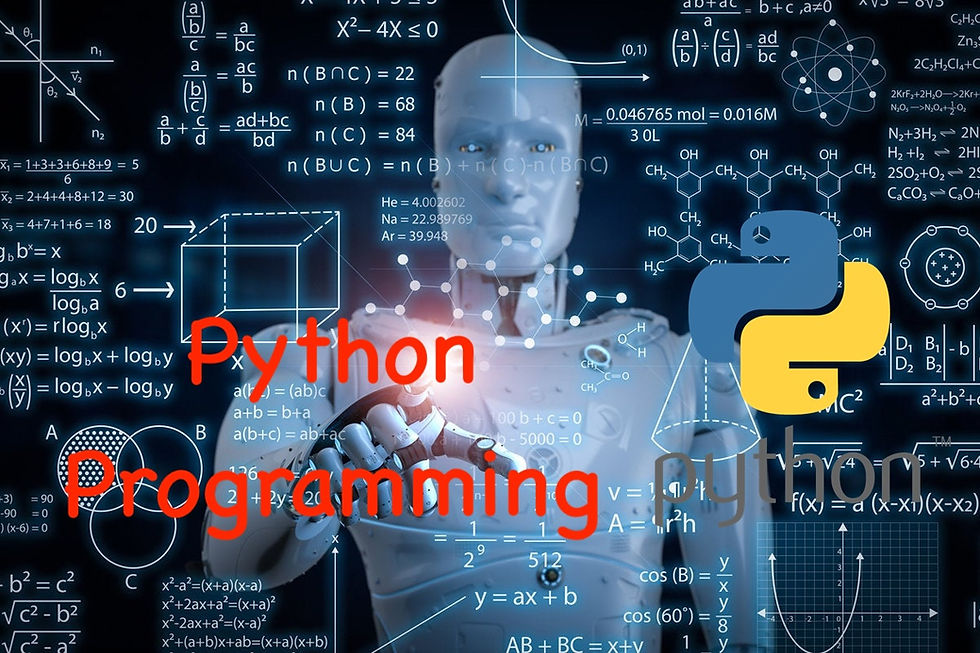Part 10: Unlocking the Magic of Data Visualization with Seaborn
- Revanth Reddy Tondapu
- May 25, 2024
- 3 min read

Hello everyone! Welcome back to our Python journey. Today, we are going to explore an amazing topic: data visualization using Seaborn. Imagine being able to understand complex data through beautiful charts and graphs. Sounds exciting, right? Let’s dive in and see how Seaborn, a powerful Python library, can help us achieve this.
What is Seaborn?
Seaborn is a Python visualization library built on top of Matplotlib. It provides a high-level interface for drawing attractive and informative statistical graphics. With Seaborn, you can create complex visualizations with simple commands, making it a favorite tool among data scientists.
Getting Started with Seaborn
Before we start creating visualizations, we need to import Seaborn. Here’s how:
import seaborn as sns
import matplotlib.pyplot as plt
import numpy as np
import pandas as pdSeaborn comes with built-in datasets which we can use for our examples. One such dataset is the "tips" dataset, which contains information about bills and tips in a restaurant. Let's load this dataset:
# Load the tips dataset
df = sns.load_dataset('tips')
print(df.head())Understanding the Dataset
The tips dataset contains the following features:
total_bill: The total bill amount.
tip: The tip amount.
sex: Gender of the person who paid.
smoker: Whether the person is a smoker or not.
day: Day of the week.
time: Time of the day (Lunch or Dinner).
size: Number of people at the table.
Our goal will be to analyze and visualize these features to gain insights.
Univariate and Bivariate Analysis
Univariate Analysis
Univariate analysis involves analyzing a single feature. For example, let’s analyze the distribution of the tip amount.
sns.histplot(df['tip'], kde=True)
plt.title('Distribution of Tips')
plt.xlabel('Tip Amount')
plt.ylabel('Frequency')
plt.show()In this code:
sns.histplot creates a histogram.
kde=True adds a Kernel Density Estimate (KDE) line to show the distribution.
plt.title, plt.xlabel, and plt.ylabel add labels and a title to our plot.
Bivariate Analysis
Bivariate analysis involves analyzing the relationship between two features. For example, let’s see how the total bill and tip amount are related.
sns.jointplot(x='total_bill', y='tip', data=df, kind='reg')
plt.show()In this code:
sns.jointplot creates a scatter plot with a regression line.
x and y specify the features we are comparing.
kind='reg' adds a regression line to the plot.
Advanced Visualizations
Pair Plot
A pair plot allows us to visualize pairwise relationships in a dataset. This is especially useful when we have multiple features.
sns.pairplot(df)
plt.show()In this code:
sns.pairplot creates scatter plots for each pair of features in the dataset.
Heatmap
A heatmap is used to visualize the correlation between different features. Correlation shows how strongly two features are related.
corr = df.corr()
sns.heatmap(corr, annot=True, cmap='coolwarm')
plt.title('Correlation Heatmap')
plt.show()In this code:
df.corr() computes the correlation matrix.
sns.heatmap creates the heatmap.
annot=True adds the correlation values to the heatmap.
cmap='coolwarm' sets the color map.
Categorical Plots
Seaborn also provides several plots to visualize categorical data. Let’s explore some of them.
Box Plot
A box plot shows the distribution of data based on a five-number summary: minimum, first quartile, median, third quartile, and maximum.
sns.boxplot(x='day', y='total_bill', data=df)
plt.title('Total Bill Distribution by Day')
plt.xlabel('Day of the Week')
plt.ylabel('Total Bill')
plt.show()In this code:
sns.boxplot creates a box plot.
x and y specify the features we are comparing.
Count Plot
A count plot shows the count of occurrences of categorical data.
sns.countplot(x='day', data=df)
plt.title('Count of Visits by Day')
plt.xlabel('Day of the Week')
plt.ylabel('Count')
plt.show()In this code:
sns.countplot creates a count plot.
Conclusion
We’ve covered the basics of Seaborn, including univariate and bivariate analysis, pair plots, heatmaps, box plots, and count plots. These tools will help you visualize your data and gain insights more effectively. In our next post, we'll dive into exploratory data analysis (EDA) and see how Seaborn can make this process easier and more intuitive.
Thank you for reading! If you found this post helpful, share it with your friends and family. Happy plotting!
Yorumlar